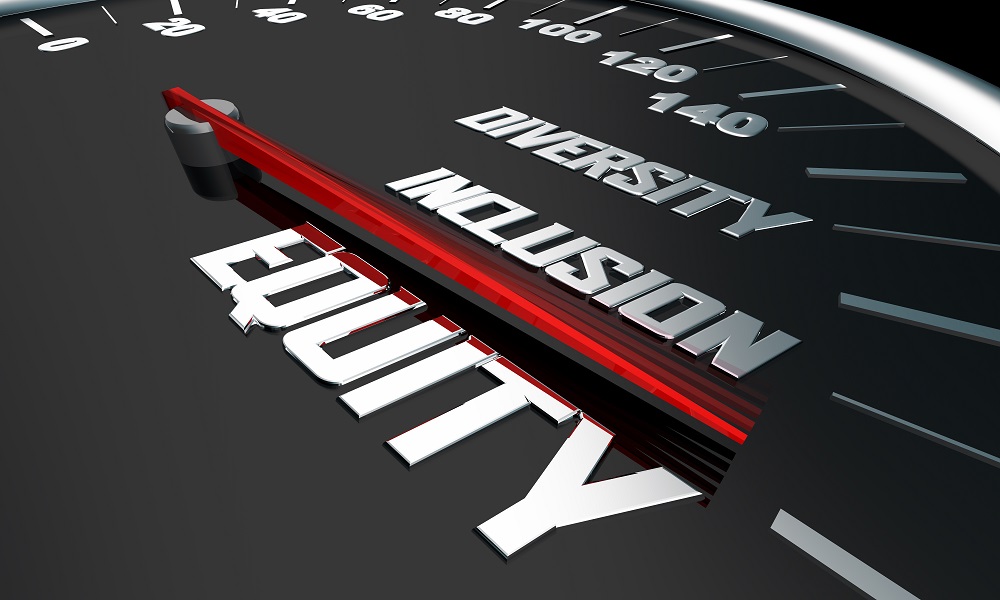Diversity, Equity, and Inclusion (DEI) conversations are happening in every industry. Smaller organizations want to create and implement DEI initiatives to stay competitive, especially when it comes to hiring. Many candidates now ask during interviews about culture and diversity. You need to have an answer for them. If you have not already started a DEI initiative, the following will give you a framework to follow and fast track your company to an DEI program.
The Discovery Process or How to Turn DEI into EDI
Diversity and Inclusion discussions often leave out Equity. When hiring people of color or different backgrounds, a few assumptions are often made:
- This creates a diverse and inclusive workplace.
- Since it is diverse and inclusive it is also equal.
- Everyone has the same and equal chance and opportunity.
If you treat everyone the same without realizing that different people have different needs, supports, and resources, that is inequality. Equity must lead in any DEI initiative. You can be diverse, you can be inclusive, but if equity is not created, it will not matter.
Read: Your Employees Can Relate to My DEI Experiences
Acknowledging that inequality exists is the first step in the culture shift to create a DEI initiative. As the employer, finding ways to level the playing field for all employees is your goal. Building a culture that starts with equity ensures that individuals get the support and resources they need to succeed. When employees have those resources, they will feel supported, respected, and on equal standing.
What we stand for, What we stand up for, and Who we stand for
At the heart of any workplace culture are the mission and values. The Mission statement is what the company stands for. The statement should have language about what you do, who you do it for, and how you do it.
Be sure the mission uses words that are gender neutral and inclusive. Avoid terms that can have negative connotations. Inclusive language is nuanced, so ask others how they speak about themselves as well as their dislikes.
Company values express tell you what your company stands up for. They should outline the beliefs, philosophies, and principles that drive the business. They should infuse your company culture with your DEI initiatives.
Statements can be as simple as ‘Inclusion and Diversity’ or ‘Celebrate Differences’. Whatever the statements are, the initiatives start with you, at the top. Company values become part of the culture and the employees embrace and embody them.
Who you stand up for is the next part of defining your DEI culture. Your company probably supports great causes. Do the current causes support your DEI initiative? If they do not, find some that will. If you are unsure which ones are important, ask your employees.
Invest in Training
We all have biases, both conscious and unconscious. To overcome biases, we must learn to think about things differently. Investing in diversity training is a way to both raise awareness and deal with discrimination.
If you are already using an employee training or HR platform, many include these as online classes. LinkedIn Learning offers a free learning path on Diversity, Inclusion and Belonging for all.
Most training will cover topics such as like different forms of racism, how a diverse and inclusive workforce can benefit everyone, and how to apply the concepts of diversity, equity and inclusion in their daily interactions with coworkers and clients.
The training would also address the bias and how to avoid the negative influence it can have in recruiting, hiring, promoting, and other business decisions.
Creating Policies
Policies that address discrimination in the workplace can no longer be overlooked or dismissed. Your policy should have language that reflects why the policy exists, and who it applies to (hint: it is everyone).
It should also list out the things you are addressing in both broad and specific terms. Clearly explain everyone’s responsibility regarding the policy and how this will be monitored.
Mention that training is required since you have invested in it. Finally, explain the procedure for filing a complaint.
Recruiting and Retention
Reducing bias is the goal of diversity hiring. To know if you have bias, audit your process. Then find one metric you can improve upon.
If your metric is improving gender and minority, but all the candidates are white males, consider where you are sourcing your candidates from. You may need to reword your posting, show existing diversity, or offer job flexibility with WFH to attract more diverse candidates.
Each time you hire, aim to improve the metrics and process.
Client Relationships and Social Responsibility
Client relationships are formed with the employees you have. Your clients and employees most often reflect each other in their makeup. By having a more diverse workforce, it can enable you to reach a more diverse client audience as well.
Your best teams will promote diversity of thought, insight, perspectives, cultural context, and innovation due to their makeup.
Social responsibility covers a vast variety of topics, but you can make DEI a part of your corporate social responsibility culture. This will help solidify your initiative and show others that your company is committed to an inclusive workforce.
With these six steps you now have a framework to begin or refine a Diversity, Equity, and Inclusion initiative in your company. I hope it enriches your company culture as much or more as it has ours.










